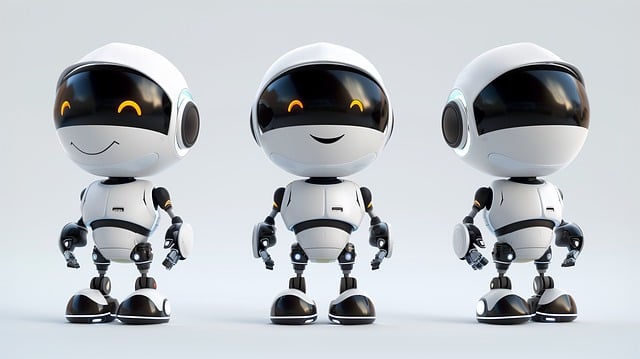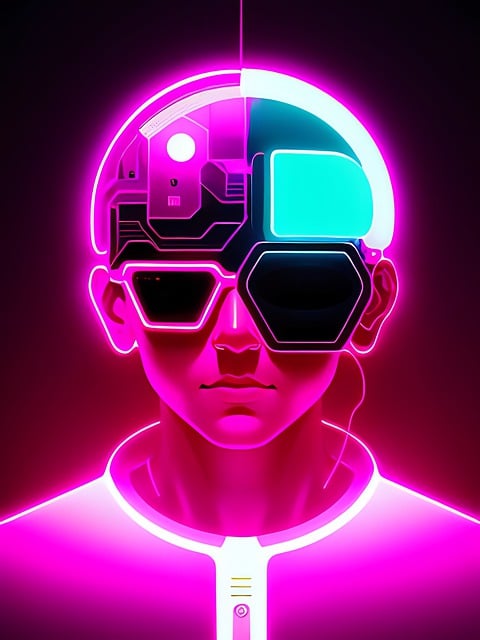Creating an ai chatbot involves a strategic blend of artificial intelligence and natural language processing (NLP) to facilitate conversational interactions with users. It begins with defining scope, from simple rule-based systems to advanced machine learning models, and includes data collection for training the language model. Sentiment analysis enhances contextually relevant responses. Designing an effective ochatbot requires clear purpose definition, crafting conversational flows, extensive NLP-driven question-response pairs, and rigorous testing. Integration and testing ensure seamless deployment across various platforms while continuous refinement optimizes user experience.
Building your own scripted ai chatbot is an exciting way to revolutionize customer engagement. In this guide, we’ll walk you through the process from understanding the fundamentals of AI chatbot development to creating and training your own ochatbot.
We’ll explore key steps like designing conversational flows, integrating natural language processing, and rigorous testing to ensure your AI chatbot provides accurate and engaging interactions. Get ready to bring your ochatbot to life and enhance user experiences!
- Understanding AI Chatbot Development: The Basics
- Designing and Training Your Ochatbot: Key Steps
- Integration and Testing: Bringing Your AI Chatbot to Life
Understanding AI Chatbot Development: The Basics

Creating an AI chatbot involves understanding the fundamentals of artificial intelligence and natural language processing (NLP). At its core, an AI chatbot is designed to engage in conversational interactions with users, mimicking human-like dialogue. The first step in building one is defining its purpose and scope. Chatbots can range from simple rule-based systems that provide pre-set responses, to advanced machine learning models capable of understanding complex queries and generating contextually relevant answers.
The development process begins with data collection and preparation. This includes gathering a diverse dataset for training the chatbot’s language model, which learns from text patterns and structures. Once trained, the model can generate responses based on user inputs, either through rule-based logic or by predicting the most likely continuation of the conversation using deep learning techniques. Effective AI chatbots also incorporate sentiment analysis to recognize user emotions and adjust their responses accordingly, enhancing the overall user experience.
Designing and Training Your Ochatbot: Key Steps

Designing and training an AI chatbot, or ochatbot, involves several key steps to ensure its effectiveness and accuracy. The first step is defining the purpose and scope of your ochatbot, determining what tasks it will perform and which industries or domains it will serve. This stage requires careful consideration of user needs and pain points, allowing you to create conversational flows that address these issues efficiently.
Once the scope is established, you can begin crafting the conversation flows and scenarios. This involves developing a comprehensive set of questions and responses that cover a wide range of possible user inputs. Leveraging natural language processing (NLP) techniques, you’ll train your ochatbot on vast datasets to enhance its understanding of human language nuances. Regular testing and iterative refinement are crucial during this phase to ensure the ochatbot learns accurately and adapts well to new conversational patterns.
Integration and Testing: Bringing Your AI Chatbot to Life

Once your AI chatbot is developed and trained, the next crucial step is integration and testing. This phase brings your virtual assistant to life, ensuring it functions seamlessly across various platforms and user interfaces. Integration involves connecting your AI chatbot to the desired channels or applications, such as websites, messaging apps, or voice assistants. It requires careful configuration to enable smooth interaction between the chatbot and these platforms.
Testing is an iterative process that verifies the accuracy, responsiveness, and reliability of your AI chatbot. This includes trying different user inputs, evaluating the chatbot’s ability to understand natural language, and ensuring it provides relevant and contextually appropriate responses. Continuous testing helps identify and fix any bugs or inaccuracies, enhancing the overall user experience. By thoroughly testing your AI chatbot in various scenarios, you can ensure its effectiveness and prepare for its successful deployment.
Building a scripted AI chatbot is an exciting journey that involves understanding the basics of development, designing engaging interactions, and testing for optimal performance. By following key steps outlined in this article, from conceptualization to integration, you’re well-equipped to create an ochatbot that enhances user experiences and drives meaningful conversations. Embrace the power of AI chatbots to revolutionize your industry and connect with users on a new level.
